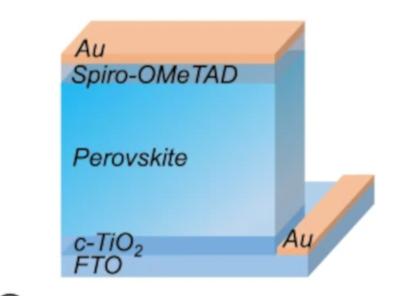Researchers at China's Shaanxi Normal University and Chinese Academy of Sciences (CAS) have designed a novel strategy to reduce the formation of anions vacancy defects in halide perovskite solar cells. The team reported that the new approach results in higher efficiency and remarkable stability.
The new method, which they defined as 'a one-stone-for-two-birds' strategy, utilized a ligand known as 3-amidinopyridine (3AP) to pin anions in the device. Anions can control the nucleation and growth of the perovskite crystals and act as a passivating agent to improve the crystallinity, thus ensuring improved efficiency. The team says the 3AP molecules deposited on the perovskite layer are able to form strong chemical bonds with the cell's lead(II) iodide (Pb–I) interlayer and, as a consequence, create a sustainable pinning effect.
“We found that 3AP molecules were arranged in parallel and anti-symmetrically between Pb–I frameworks with a short interlayer distance of 3.45 angstrom (Å), which is much shorter than that obtained for previously reported ligands, leading to unique coordination within the crystals,” the researchers explained.
The team built the cell with a substrate made of tin oxide (FTO), a titanium oxide (TiO2) electron transport layer, a halide perovskite known as α-formamidinium lead iodide (α-FAPbI3), a spiro-OMeTAD hole transport layer, and gold (Au) metal contact.
They evaluated the performance of the device via density functional theory (DFT) calculations and compared it with that of a reference cell utilizing commonly used large organic ligands such as 2-phenethylammonium (PEA) and n-butylammonium (BA).
The group found that the 3AP-based cell achieved a maximum power conversion efficiency of 25.3%, an open-circuit voltage of 1.181 V, a short-circuit current of 26.04 mA cm−2, and a fill factor of 82.21%. The reference cell without 3AP molecules reached an efficiency of 22.76%, an open-circuit voltage of 1.123 V, a short-circuit current of 24.94 mA cm−2, and a fill factor of 81%.
Through further measurements, the scientists also found that a 3AP-based cell without encapsulation was able to retain 92% of its initial efficiency after 5000 h exposure at ambient conditions. “The anion-vacancy defect engineering via strong molecule–perovskite coordination provides an effective and simple solution for increasing both the efficiency and stability of perovskite solar cells,” they stated.
“Our findings offer an effective chemical strategy for the facile fabrication of high-performance stable perovskite solar cells and are potentially applicable to other perovskite optoelectronic devices,” the team concluded.




